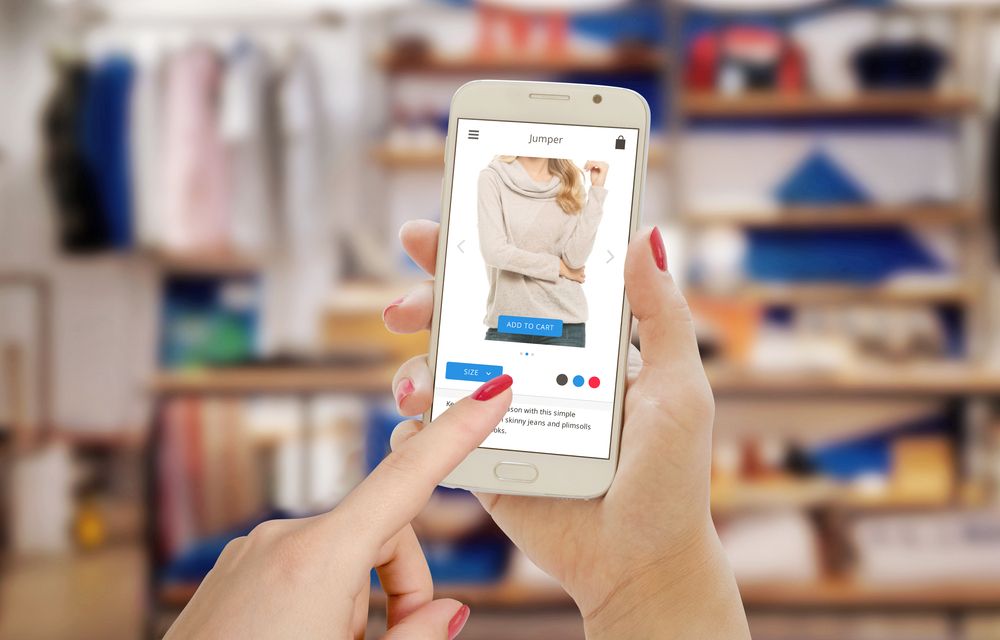Chatbots and Virtual Stylists: Fashion’s New Customer Support Tech

Over the past decade, retail has experienced a dramatic shift from brick-and-mortar stores to online shopping platforms, particularly in the fashion industry. The growth of e-commerce solutions has given consumers greater convenience, a wider variety of choices, and the ability to shop from anywhere in the world. This change has driven the need for more sophisticated ecommerce tech to ensure smooth customer experiences, from browsing to checkout.
Among these are chatbots and virtual stylists, which are rapidly becoming essential tools for customer support. With the merging of ecommerce tech and personalised shopping experiences, brands are leveraging these tools to enhance their sales strategy.
Here's how chatbots and virtual stylists are reshaping the consumer experience, offering seamless, efficient and highly personalised interactions that cater to the needs of modern consumers.
How Chatbots and Virtual Stylists Work
With the rise of e-commerce, the expectations of customers have evolved. Shoppers now seek personalised, instantaneous service akin to or better than what they would typically receive in a physical store. This is where chatbots and virtual stylists come into play, offering solutions to bridge the gap between digital and human interaction.
Chatbots are AI-driven software applications designed to simulate human-like conversations. In the fashion industry, chatbots are commonly integrated into websites and mobile apps, providing real-time assistance to customers. They can answer queries, prevent abandoned carts, recommend products, assist with sizing information and even process transactions, all while offering 24/7 support.
A well-designed chatbot can significantly improve a brand's ecommerce and tech ecosystem by handling multiple customer interactions simultaneously, reducing wait times, and freeing up human agents for more complex tasks. Brands such as H&M, ASOS and Burberry are already using chatbots to streamline customer service and enhance user experiences.
Virtual stylists take personalisation to the next level. While chatbots handle basic customer service functions, virtual stylists are designed to replicate the experience of having a personal shopper or stylist. These AI-driven tools use advanced algorithms to offer customised fashion advice, outfit recommendations, and even create curated shopping experiences based on an individual’s style preferences.
Virtual stylists are transforming how fashion brands interact with their customers. From helping users select the perfect outfit for an upcoming event to suggesting accessories that complement a recent purchase, virtual stylists provide an elevated shopping experience that is both convenient and highly tailored.
The Key Benefits
Chatbot Pros
1. Instant Customer Support
One of the primary advantages of chatbots in fashion is their ability to provide instant support. Whether a customer has a question about product availability or needs help navigating a website, chatbots can respond instantly, offering immediate solutions without the need for human intervention. This speed is vital in e-commerce, where customers can easily abandon a purchase if they face obstacles. According to statistics, automated assistants currently manage 65% of communications between businesses and consumers.
2. 24/7 Availability
Unlike human customer service agents, chatbots are available around the clock. This constant availability is particularly useful for global fashion brands that cater to customers across different time zones. Whether it's late at night or early in the morning, a chatbot can assist customers at any time.
3. Enhanced Personalisation
Modern chatbots are equipped with AI and machine learning capabilities, allowing them to offer personalised recommendations based on a customer's browsing history, preferences, and past purchases. This level of personalisation mimics the experience of an in-store stylist, guiding the customer through their shopping journey.
4. Cost Efficiency
For fashion brands, deploying chatbots can lead to significant cost savings. By automating routine tasks such as answering FAQs, collecting reviews or tracking orders, companies can reduce the need for a large customer support team, ultimately lowering operational costs.
Virtual Stylist Pros
1. Tailored Recommendations
Virtual stylists can analyse a customer's style preferences, body type, and fashion trends to make personalised recommendations. This makes online shopping more engaging and ensures that customers find pieces that truly match their tastes. For example, platforms like Stitch Fix use AI-based virtual stylists to create curated fashion boxes based on individual preferences.
2. Enhanced Customer Engagement
By offering personalised style advice, virtual stylists foster deeper engagement with customers. Shoppers are more likely to return to a brand that provides tailored recommendations, creating a sense of loyalty. This personalised interaction helps replicate the in-store experience, where a stylist might help a shopper put together a complete outfit.
3. Reducing Returns
One of the biggest challenges in fashion e-commerce is the high return rate due to sizing issues or dissatisfaction with the product. Virtual stylists can help mitigate this problem by providing accurate size and fit recommendations, ensuring that customers make informed purchasing decisions. This reduces the likelihood of returns, saving both time and resources for fashion brands.
4. Improving Conversion Rates
Personalised shopping experiences, guided by virtual stylists, can lead to higher conversion rates. When customers receive tailored recommendations that align with their preferences, they are more likely to make a purchase. By integrating virtual stylists into their e-commerce solutions, fashion brands can optimise their sales funnels and enhance their overall performance.

Challenges and Considerations
While the benefits of chatbots and virtual stylists in fashion e-commerce are clear, there are still challenges to consider. For one, the technology must be sophisticated enough to provide meaningful and accurate assistance. Poorly designed chatbots or virtual stylists that offer irrelevant or incorrect suggestions can frustrate customers and damage a brand’s reputation.
Additionally, privacy concerns may arise as these tools rely on collecting and analysing personal data to provide personalised recommendations. Fashion brands must ensure that they comply with data protection regulations and offer transparency regarding how customer data is used.
As ecommerce tech continues to advance, the role of chatbots and virtual stylists will only expand. We are likely to see even more sophisticated tools that offer hyper-personalised experiences, merging the convenience of online shopping with the bespoke services traditionally found in physical stores.
Brands that invest in these technologies now will be well-positioned to cater to the demands of future consumers, offering seamless, efficient, and highly engaging customer support. With chatbots and virtual stylists at the forefront of fashion's digital transformation, the future of customer support looks both innovative and exciting.
The integration of chatbots and virtual stylists is revolutionising customer support in the fashion industry. By leveraging advanced ecommerce and tech solutions, fashion brands are creating personalised, efficient, and engaging shopping experiences that cater to the needs of the modern consumer. As the line between human and digital interactions continues to blur, these tools are set to play an increasingly pivotal role in shaping the future of fashion e-commerce.
We're looking for guest contributors to share their insights on fashion trends, industry insights and the latest in retail! If you have a flair for writing and want to have a voice, we'd love to feature your work on our blog. Submit your articles and become a part of Pure London x JATC, today!
